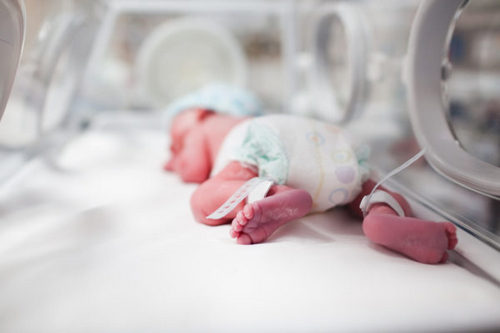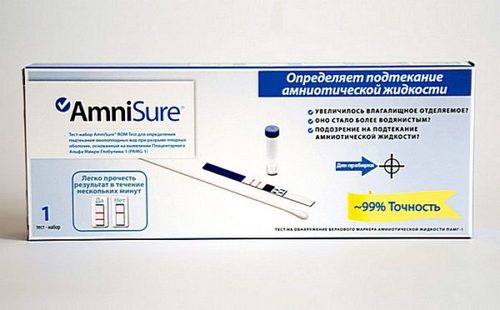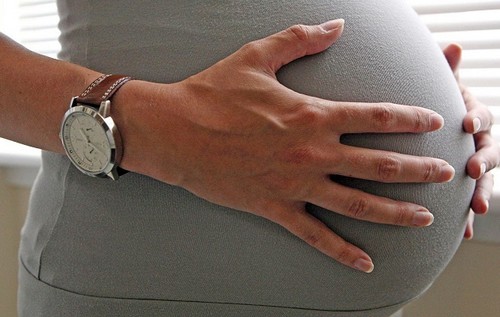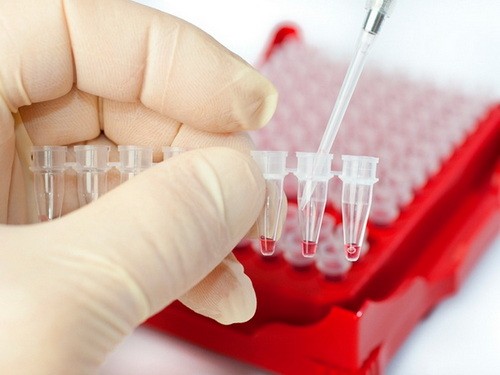Anhydrous period is one of the stages of childbirth. In the normal course of pregnancy, it occurs at the end of the first period. However, there are situations when the discharge of amniotic fluid begins much earlier than it should.
A prolonged anhydrous period during childbirth can pose a threat to the health and life of both the child and the mother.
The term “anhydrous period” means the time period from the beginning of the outflow of amniotic fluid (immediately after rupture of the fetal bladder) to the birth of the baby.
The period is considered anhydrous, even if the amniotic fluid leaves in small portions through microcracks of the fetal bladder.
When the rupture of the fetal bladder occurs
Amniotic fluid discharge can be normal, early, and premature:
- Normally, rupture of the fetal bladder occurs during labor and opening of the cervix by about 6 cm.
- If the rupture occurred during childbirth, but with insufficient opening of the cervix, this is an early outflow of water. This situation does not pose a great danger in a full-term pregnancy. However, the birth process can be delayed, since the pressure of the fetal bladder during contractions helps the cervix to open at the first stage. And when the bubble bursted well in advance, labor can subside.
- Premature discharge is considered to be an outflow of water before the onset of labor. This pathological condition can happen at any stage of pregnancy. It carries the greatest danger to the baby, in most cases – this is the beginning of premature birth. The question of how much a child can be without water determines further medical tactics.
Anhydrous period normal
How long can an anhydrous period during childbirth last? Everything is individual here. However, the norm is considered to be the duration of the anhydrous period in childbirth up to 6 hours.
Women who have already had an outflow of amniotic fluid are naturally interested in how much a child can be without amniotic fluid. Pathology is the duration of an anhydrous period of more than 72 hours. It can reach from a few days to several weeks, and without medical cover during this period, complications will clearly arise in the mother and fetus.
As soon as the pregnant woman has lost water or there is a suspicion of leakage, an urgent need to contact an obstetrician-gynecologist. After all, how much a child can be in the womb without water in a specific situation is not known before a specialist is examined.
What is the danger of a long waterless period
The longer the anhydrous period and the further it is in time from the normal delivery period, the more possible complications. When the cervix is opened above 3 cm, rupture of the fetal bladder usually does not aggravate the course of labor.
If premature discharge of the waters occurred after 34 weeks of normal pregnancy, we are talking about early births with a high probability of a successful birth of a viable premature baby. The most fatal consequences for the fetus will be with premature discharge of amniotic fluid in early pregnancy.

Possible complications of a prolonged anhydrous period:
- Spontaneous abortion or premature birth. Their danger to the baby directly depends on the duration of pregnancy.
- Premature detachment of the placenta.
- Prolonged “dry” birth. Contractions are very painful and can be ineffective. The time between them lengthens, they become weak, so labor can completely subside.
- The umbilical cord falls along with the waters.
- Birth injury to a child.
- Infection of the membranes.
- Intrauterine fetal death from hypoxia or infection.
- The development of endometritis in women.
- The development of sepsis, up to the death of the mother.
Infection with a long anhydrous period does not mean the uncleanliness of a pregnant woman. The fact is that all women have their own unique vaginal microflora, which includes lactic acid bacteria and many conditionally pathogenic microorganisms.
Fetal membranes form a sterile environment for amniotic fluid. If their integrity is violated, the bacteria quickly rise up from the vagina, penetrate through the holes into the bladder and begin to develop in the amniotic fluid, infecting the fetus. Of course, the presence of vulvovaginitis and vaginosis in a pregnant woman significantly complicates the situation, greatly increases the risk of bacterial inflammation and accelerates its development.
How long can a fetus live in an anhydrous period?
How long can a baby be in the womb without water? It has already been said above that the duration of an anhydrous period of up to 6 hours is not threatened by the child.
How much hours a child can be without water depends on the viability of the fetus and many other factors:
- Gestational age.
- Amniotic fluid volume.
- The presence of intrauterine infection.
- Is it about fetal hypoxia?
So, how much a child can be without amniotic fluid, largely depends on the factors listed above. A healthy mother in the late stages of pregnancy (over 28 weeks), in the absence of a congenital pathology of the baby, proper presentation, absence of infection, competent medical management, pregnancy can be maintained until the required time for several days or even weeks.
Anhydrous Examination
At the very beginning of the anhydrous period or if you suspect a discharge of water, you must consult a gynecologist who will schedule an examination. Because without diagnostic measures no one knows how many children can be in the womb without water.
Inpatient examination includes:
- Ultrasound of the fetus with dopplerometry, which will determine the volume of amniotic fluid, the integrity of the membranes and the condition of the child.
- Analysis for the determination of amniotic fluid in the vaginal secretion.
- CTG (cardiotocography) of the fetus to clarify the condition of the child and the presence of hypoxia.
- Tests for revealing a latent fetal infection.
- Gynecological examination to determine the opening of the cervix, as well as for the loss of the umbilical cord or parts of the fetus.
- Other general clinical studies – blood and urine tests, an assessment of the condition of the mother.
Home Examination Tests
When a woman feels well, but suspects leakage of amniotic fluid, you can buy tests at the pharmacy to determine the amniotic fluid in the vaginal discharge:
- Gaskets Frautest Amnio. The most convenient option for use at home, represented by a conventional gasket. This method allows you to monitor the discharge for 12 hours. The test is in the gasket itself, so the result is evaluated when considering the presence of spots on it. With a negative result, it is either colorless or yellowish. A positive result for the presence of amniotic waters is the appearance of blue or green spots of any size and intensity on the gasket.
- AmniSure test kit. This technique will give a more accurate result. The kit includes a vaginal swab, reagent and test strip. The swab needs to be introduced for a while, then immersed in a reagent for 1 minute. In the liquid you need to lower the test strip and wait for the result for 10 minutes. A positive result is the presence of two strips.

Anhydrous Treatment
With the discharge of amniotic fluid, regardless of the gestational age, the woman is hospitalized. From medical tactics depends on how long a child can stay without water. It is very important for the patient to observe the medical and protective regimen and aseptic conditions of stay. Pregnant women are prescribed antibiotics for preventive purposes, which cannot harm the baby. Also used drugs that suppress labor, and other necessary drugs.
If the gestational age is over 34 weeks, the pregnancy is not extended. A woman is hospitalized to ensure the normal course of childbirth. If necessary (if the anhydrous period lasts more than 6 hours, and there are no contractions, or they are weak and ineffective), medication is stimulated by labor. According to indications, mechanical expansion of the cervix is performed.
Termination of pregnancy or stimulation of preterm birth is carried out in the presence of an unfavorable prognosis for the child or mother:
- massive bacterial infection of the uterus, placenta, fetal membranes and the fetus itself;
- the development of sepsis in the mother;
- multiple deformities of the child and the pathology of its development;
- detachment of a significant part of the placenta;
- fetal death of the fetus.
How long can a child be without amniotic fluid is a very important question for a doctor. An anhydrous period is a normal stage of childbirth, but its long course can be dangerous. A woman does not know how much a child can be without water, so procrastination is absolutely unacceptable in this case. Observation of an obstetrician-gynecologist is necessary to choose the right tactics for managing pregnancy and childbirth.




